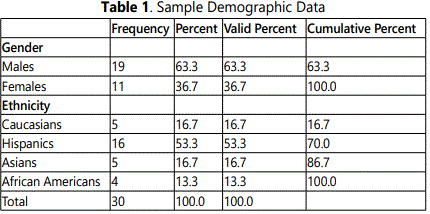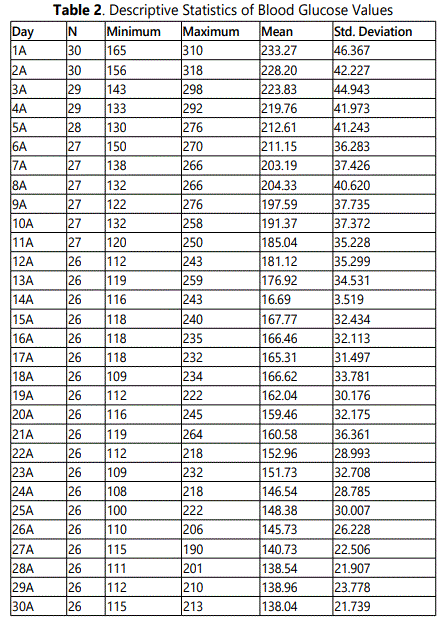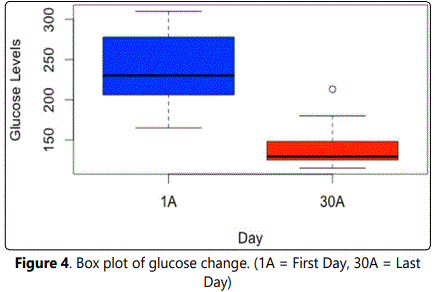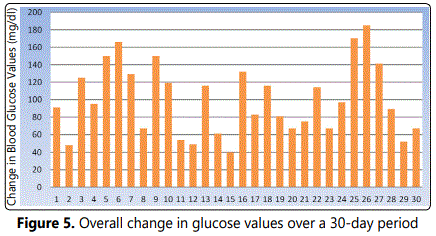Review Article
A Project to Evaluate the Effectiveness of a Shared Web-Based Log in Managing Blood Glucose Levels among Patients with Type 2 Diabetes Mellitus
Assistant Professor, The University of Texas Medical Branch, School of Nursing, 301 University Blvd, Galveston, Texas 77555
*Corresponding author: Bushra M Manakatt, Assistant Professor, School of Nursing, University of Texas Medical Branch, USA, Tel: 832 768 4721, E-mail: bmmanaka@utmb.edu
Received: September 19, 2018 Accepted: September 25, 2018 Published: October 2, 2018
Citation: Manakatt BM. A Project to Evaluate the Effectiveness of a Shared Web-Based Log in Managing Blood Glucose Levels among Patients with Type 2 Diabetes Mellitus. Madridge J Case Rep Stud. 2018; 2(2): 80-84. doi: 10.18689/mjcrs-1000120
Copyright: © 2018 Manakatt BM. This work is licensed under a Creative Commons Attribution 4.0 International License, which permits unrestricted use, distribution, and reproduction in any medium, provided the original work is properly cited.
Abstract
Diabetes is a chronic disease that is widely recognized as one of the leading causes of death and disability in the United States. Given the chronic nature of diabetes, selfcare management is key to improving patient outcomes and reducing the burden on the healthcare system. Self-monitoring of blood glucose is integral to self-care management of diabetes. Blood glucose monitoring is a shared responsibility, and constant communication between the patient and provider is vital in the daily management of diabetes, including diet, exercise, medications, and monitoring of blood glucose levels. When the patient does not have insurance coverage, frequent clinic visits for blood glucose monitoring and medication adjustments may become unaffordable, causing patients to remain undertreated or untreated for long periods of time. In such instances, a web-based log of daily glucose levels that is shared between the patient and the clinician may reduce the need for frequent clinic visits resulting in lower costs and more accessible care for low income or uninsured patients. In this project, 30 Type 2 Diabetes Mellitus patients maintained a shared web-based log on Diabetes 24/7, which was also accessible to the investigator, for one month. The investigator monitored their blood glucose levels daily and provided feedback to the patients as needed based on the reported levels. Analysis using the Wilcoxon Signed-Rank Test indicated that the data was significant at p<0.0001 (study calculated p<0.00008), indicating the effectiveness of a shared web-based blood glucose log in the daily management of diabetes.
Introduction
Diabetes is a major health problem in the United States (US), affecting approximately 9.3% of the population (Centers for Disease Control and Prevention [CDC], 2014). Patients with diabetes are at greater risk of developing heart disease, stroke, blindness, kidney failure, neuropathy, and amputations. Recent studies have projected that by 2050, the prevalence of diabetes will increase to between 21% and 33% of the U.S. population (CDC, 2011a). According to a World Health Organization (WHO) report (2011), diabetes is the seventh leading cause of death in the US, and present trends suggest that diabetes-related mortality will become the leading cause of death in the future. Diabetes is a chronic disease and self-care management is key to improving patient outcomes and reducing burdens on the healthcare system in terms of utilization and healthcare costs. Hence, it is important to develop targeted interventions to promote self-care management among diabetes patients. Self-care management of diabetes is multifaceted and includes diet, exercise, stress management, and medications—all aimed at maintaining blood glucose level within the normal range. Responsibility for blood glucose management is shared between the patient and the clinician, and constant communication is vital to achievement of desired diabetes management outcomes. Consequently, daily monitoring of blood glucose levels and communication of results to the clinician for timely feedback will best achieve effective short-term blood glucose maintenance and optimum diabetes control.
Problem Statement
Diabetes is an epidemic affecting the U.S. population, and there is widespread disparity among affected groups with diabetes and associated complications. Non-White racial and ethnic populations experience a greater incidence of morbidity and mortality resulting from diabetes and its complications [3]. Diabetes is more prevalent among Hispanics in the US and their risk of developing diabetes is 66% higher compared to non-Hispanic White adults. Diabetes is the fifth leading cause of death among Hispanics in the US and is a leading cause of heart disease, stroke, kidney disease, blindness, and amputations (CDC, 2011b). Furthermore, Hispanics were 1.5 times as likely as non-Hispanic Whites to die from diabetes (Department of Health and Human Services, Office of Minority Health, 2011).
Self-care management is the primary treatment strategy for controlling diabetes; however, ensuring adherence to the treatment protocol and achieving lifestyle modifications have been major challenges for family practice providers who treat patients with diabetes. Diabetes requires managing different aspects of care every day. Sporadic communication between patient and provider only during scheduled visits is a major factor disrupting continuity of care and contributing to poor adherence [4]. evaluated a web-based diabetes selfmanagement program, Diabetes Connect (DC), to help patients effectively manage their diabetes and improve clinical outcomes [5]. Proposed use of an Internet-based blood glucose monitoring system (IBGMS) to improve diabetes control. Patients responded positively in a pilot study of a shared glucose monitoring web application, the Diabetes Connected Health (DCH), created by [7]. Multiple online tools are available to help patients log blood glucose levels for self-care management, but they lack the ability to share the information instantly with the provider and receive timely feedback and guidance toward achieving daily blood glucose control. This is especially important for patients experiencing sustained difficulty controlling blood glucose who require frequent adjustment of their medication regimens. Using a shared webbased tool for secure communication between patient and provider could lead to improved control of blood glucose levels for diabetes patients. In this project, the PI evaluated the effectiveness of the Diabetic 24/7 web log from the American Diabetic Association (ADA) in improving the blood glucose levels of diabetic patients.
Project Purpose
The overall purpose of this project was to assess the effectiveness of a web-based blood glucose log, Diabetes 24/7, shared between the patient and provider in managing the blood glucose levels of adult patients with Type 2 Diabetes Mellitus at a suburban Houston, TX family practice clinic.
PICO Questio
How effective is a web-based blood glucose log shared between the patient and provider in controlling the blood glucose levels of adult patients with Type 2 Diabetes Mellitus in a suburban Houston, TX family practice clinic?
Population Adult Type 2 Diabetes Mellitus patients at a suburban Houston, TX family practice clinic
Intervention Web-based log shared between clinician and patient
Comparison Patients receiving standard diabetes care at the clinic
Outcome Reduction in blood glucose level to ≤126 mg/dl
Review of Literature
Self -monitoring of blood glucose (SMBG) is integral to the self-care management of diabetes. Primary caregivers commonly request that patients bring a record of their daily home-based blood glucose readings to their regular appointments so that providers can evaluate their daily pattern of blood glucose management [6]. Determined through their retrospective cohort study that SMBG is highly effective in preventing complications and achieving long-term control of Diabetes Mellitus, however a similar study conducted by [2] reported that a minority of diabetes patients actually made SMBG data available to their providers. BoydWoschinko and colleagues (2013) further indicated that when patients did make SMBG data available, insulin-dependent patients with poorly controlled diabetes showed significant reductions in glycosylated hemoglobin (HgbA1C) levels.
The sharing of SMBG data between patient and provider only during clinic visits has the significant disadvantage of preventing timely feedback from the provider, thus contributing to decreased patient adherence. Diabetes patients often try to manage fluctuating daily blood glucose between clinic visits without consulting their provider, frequently leading to uncontrolled blood glucose. Improved communication and appropriate medication titration through concurrent sharing of blood glucose results with clinicians may help diabetes patients achieve normal blood glucose levels more quickly. Technological developments have made instant communication possible anywhere and everywhere, making timely communication and feedback on patient health data more feasible and cost-effective in primary care settings and promising a better quality of life for patients with diabetes.
With the advent of versatile mobile applications, it is not surprising that multiple mobile applications for the management of blood glucose levels have been developed [1]. Tested one such smart phone-based diabetes management system and reported a remarkable two-point drop in participants' HbA1c levels within 90 days [8]. Investigated the effectiveness of an educational intervention on glycemic control in Type 2 Diabetes Mellitus patients that used cellular telephones, short messaging service (SMS), and the Internet. In a 12-month study in which patient data were monitored weekly and timely provider feedback was offered, HbA1c values of less than 7% were observed. Although they are widely regarded as effective and versatile, mobile applications have multiple issues such as difficulties with device compatibility, cellular network access, and data management.
Multiple reliable web-based proprietary software applications for blood glucose monitoring have been developed that do not experience the same usability issues associated with smart-phone applications [7]. Conducted a pilot study of a shared glucose monitoring web application, Diabetes Connected Health (DCH), which allowed patients and clinicians to view, evaluate, and discuss blood glucose data [4]. tested a similar web-based software program called Diabetes Connect (DC) for 12 months, and reported that early patient engagement and continuous active participation resulted in superior clinical outcomes as compared with unengaged patients. Patient engagement includes daily blood glucose monitoring, daily entry of blood glucose values into the software, adherence to medication, dietary, and exercise regimens as recommended by the clinician. Kwon and colleagues (2004) also demonstrated the superiority of an IBGMS over traditional outpatient management strategies for improving diabetes control in a three-month randomized controlled clinical trial with 110 patients. At the 12-week follow-up examination, a decrease in HbA1c levels from 7.59% to 6.94% was observed in the intervention group (P< 0.001). The authors of these studies concluded that IBGMSs were well received by the patients and highly effective in achieving better clinical outcomes, however these programs are costly when implemented through a contracted third-party service. In addition, involvement of a third-party contractor introduces the issue of protected health information and the potential for a breach of patient privacy. Therefore, a low-cost IBGMS that can be easily implemented and managed by individual clinics is a viable alternative to the proprietary software applications.
In summary, the reviewed literature indicates the importance of SMBG and of the timely communication of daily values to the clinician in achieving optimal glycemic control and improved quality of life among diabetic patients. The current gap in timely communication between patients and clinicians calls for innovative solutions to facilitate realtime consultation; therefore, the purpose of the proposed project is to evaluate the potential of a technological intervention to overcome this challenge.
Patient self-efficacy and self-confidence with respect to adherence to prescribed therapeutic regimens, leading to and sustained diabetic control and better health outcomes.
Process and Outcome Objectives
The process and outcome objectives of this project are:
1. To determine the user friendliness of the Diabetes 24/7 web-based blood glucose log in recording and closely monitoring the blood glucose values of patients with diabetes who are on medication management
2. To evaluate the effectiveness of the Diabetes 24/7 blood glucose log in helping the patients to achieve desired blood glucose values over a 30-day period
3. To determine the effectiveness of Diabetes 24/7 in promoting adherence to self-monitoring of blood glucose in adult patients with Type 2 Diabetes Mellitus
Implementation
Approval from the Institutional Review Board (IRB) and written permission from the clinic director were obtained prior to implementation of this project at the South Belt Clinic in Houston, TX. Medical records of patients at the South Belt Clinic were reviewed to identify potential participants for the project, who were subsequently approached by the investigator to request their participation in the project. The scope of the project, including the risks and benefits they might incur, was explained to all volunteers and a signed informed consent was completed by each participant. Thirty adult patients in the 30-60 years old age group who possessed minimum computer literacy with basic knowledge of applications like Microsoft Office and web browsing were recruited for the project. This project used the blood glucose management function of the free web application called Diabetes 24/7 from the ADA website to create and maintain a blood glucose log that was accessible by both the patient and the investigator. Participants completed a socio demographic data sheet identified by their assigned code number. The investigator then helped each participant to create a Diabetes 24/7 account, access the web-based blood glucose monitoring log, and authorize the investigator to view their blood glucose entries. The participants entered their daily fasting (AM) and bedtime (PM) finger stick blood glucose values into the log over a 30-day period. The investigator monitored trends in patient blood glucose values once daily and provided feedback as needed using the encrypted message function within the Diabetes 24/7 system. The project was implemented between April 1, 2014 and June 30, 2014. The data from Diabetes 24/7 was later transferred to a Microsoft Excel spreadsheet for analysis using SPSS (IBM, New York, NY).
Data Analysis
The project's expected outcomes were evaluated through descriptive (e.g., mean, median, mode, and standard deviation) and inferential (t-test) statistics analysis of the blood glucose values to determine whether there was a statistically significant difference between blood glucose levels at beginning and end of the study. In addition, demographic data were analyzed to describe the sample of participants. The blood glucose data was extracted from the Diabetes 24/7 blood glucose log of each patient. Figure 3 is a sample of a patient record created and maintained using the Diabetes 24/7 monitoring system.

Thus, the Diabetes 24/7 program yielded prospective data of daily AM and PM blood glucose values as entered by each participant in their blood glucose log, which was shared between the participant and the investigator. Trends in blood glucose levels were monitored by the investigator and patients were given timely feedback with the goal of achieving normal blood glucose levels. Collected data was transferred to a Microsoft Excel spreadsheet for statistical analysis using SPSS (IBM, New York, NY).
Demographic data was also extracted from the sociodemo graphic questionnaires completed by each participant and a descriptive statistical analysis was performed to describe the sample as shown in Table 1.

Although thirty adult patients were recruited for the project, four patients did not complete the study for personal reasons, leading to a 13% attrition rate and a final sample of 26 patients.

Although patients recorded their blood glucose values in the morning and evening, there were several inconsistencies in the evening recording times and the statistical analysis of the aggregate data included only the AM readings. The results of the statistical analysis of blood glucose values are shown in Table 2.

The overall blood glucose values for the sample population ranged from 110-318 mg/dl and the observed changes in glucose values ranged from 40-185 mg/dl over the 30-day study period.

The mean glucose level for the first day was 237.2 (45.02) and for the last day was 138.0 (21.74). Before inferential testing, the normality assumption of the glucose levels for both days was tested using the Shapiro-Wilks Test assuming a null hypothesis and normal distribution. However, the distribution for the last day was not normal, so a dependent t-test was not used. A dependent Wilcoxon Signed-Rank test was used to test the differences between the first and last days. Because the data was paired (meaning that it is the same person but different observations for the two days), the dependent test was chosen. With a null hypothesis that glucose levels were equivalent on both days, the test calculated a p-value of 0.00008. This indicates that the null hypothesis would be rejected, signifying a significant difference in glucose levels between the first and last days.
Discussion
This project tested the effectiveness of a web-based log shared between the patient and provider in aiding blood glucose management in a primary care setting. The web-based blood glucose log has been described in multiple studies as a useful tool for successful self-care management in patients with uncontrolled diabetes [4], [7]. In this project, constant supervision of each patient's blood glucose levels by the NP was instrumental in ensuring adherence to prescribed medications, following a diabetic diet, and completing regular exercise, which resulted in a substantial improvement of blood glucose values. Furthermore, the use of an ADA-approved, free, and secure web application helped the participants to communicate constantly with the provider, ensuring timely trend monitoring and feedback. This project demonstrated an overall increase in participant adherence to prescribed therapeutic regimens by the participants and validated the effectiveness of the Diabetes 24/7 web log provided by ADA in managing patient blood glucose levels. Diabetes 24/7 can be effectively implemented in primary care practices because it is a free, secure, and user-friendly system.
Limitations
The limitations of the project are the small sample size and a moderate attrition rate. The initial sample size was 30 participants, however four patients subsequently dropped out of the study. Constant encouragement and reinforcement from the investigator was needed to sustain patient participation until the end of the study. The use of a convenience sample is another limitation of this project. In addition, only the AM blood glucose values could be used for analysis because the PM values were invalid due to consistent recording times.
Recommendations
This study should be replicated using a larger sample, but with some modifications to the protocol. It should also be replicated in a patient population with Type 1 Diabetes Mellitus.
Conclusion
Patient adherence to the recommended therapeutic regimen is a constant challenge in primary care management of Diabetes Mellitus. This small scope project demonstrated the effectiveness of a web-based blood glucose log in improving patient and provider communication to achieve daily management of blood glucose level without frequent clinic visits. The expected long-term outcome of this project is implementation of a web-based monitoring system in the clinic to follow up with patients who require close monitoring of their daily blood glucose levels. The goal would be to achieve and/or maintain a fasting blood glucose level of 126mg/dl without the need for multiple, frequent clinic visits to adjust medication regimens.
References